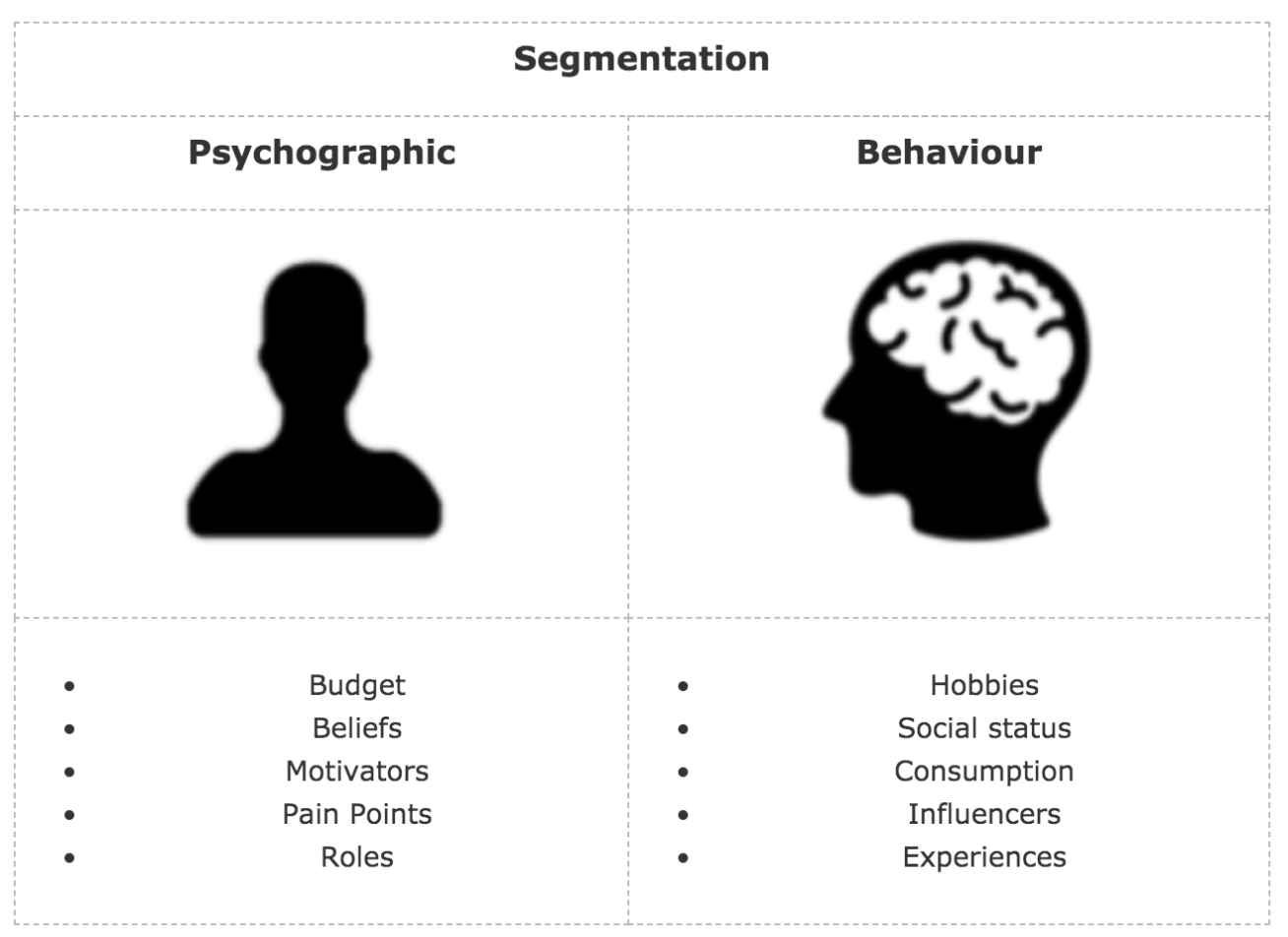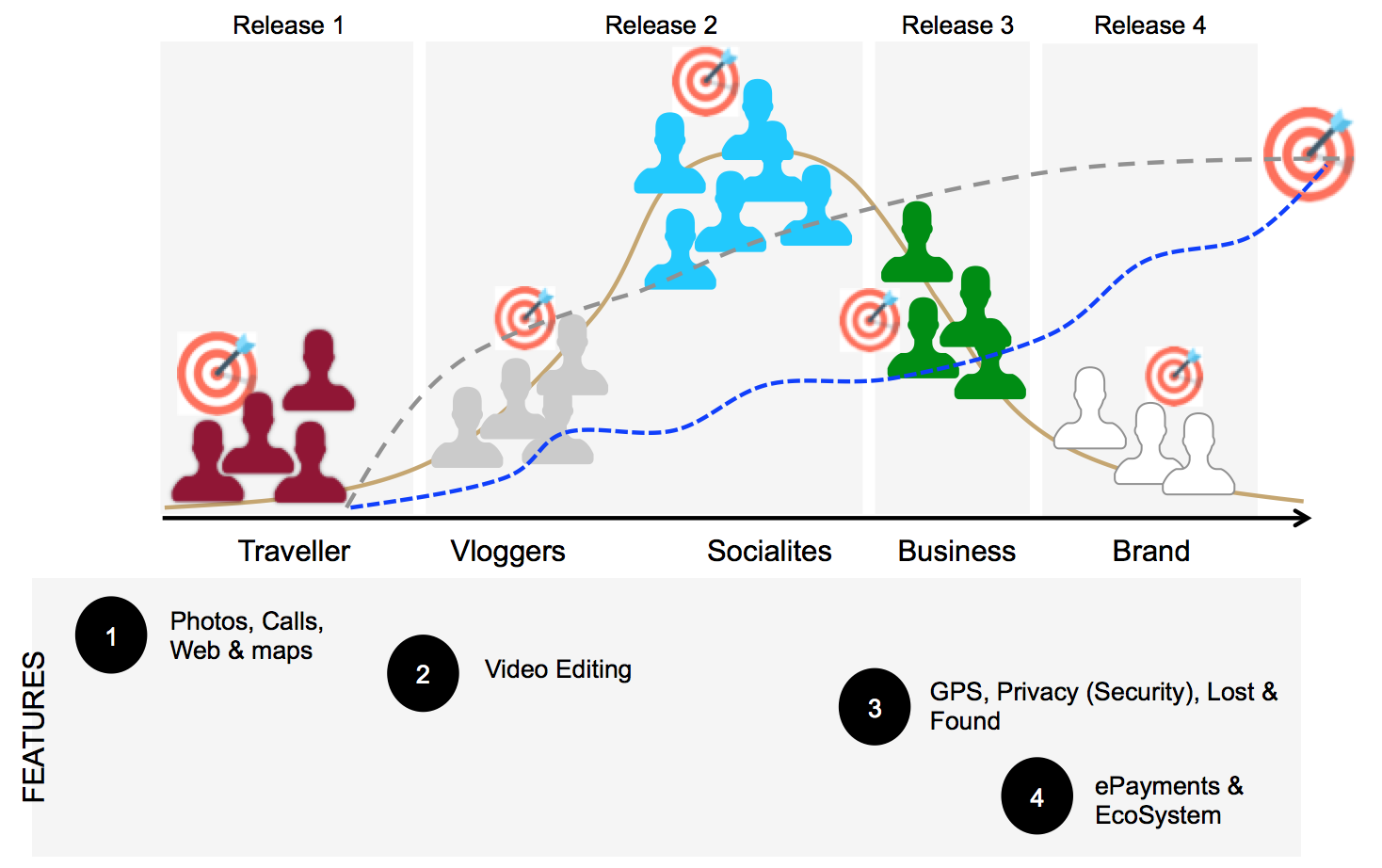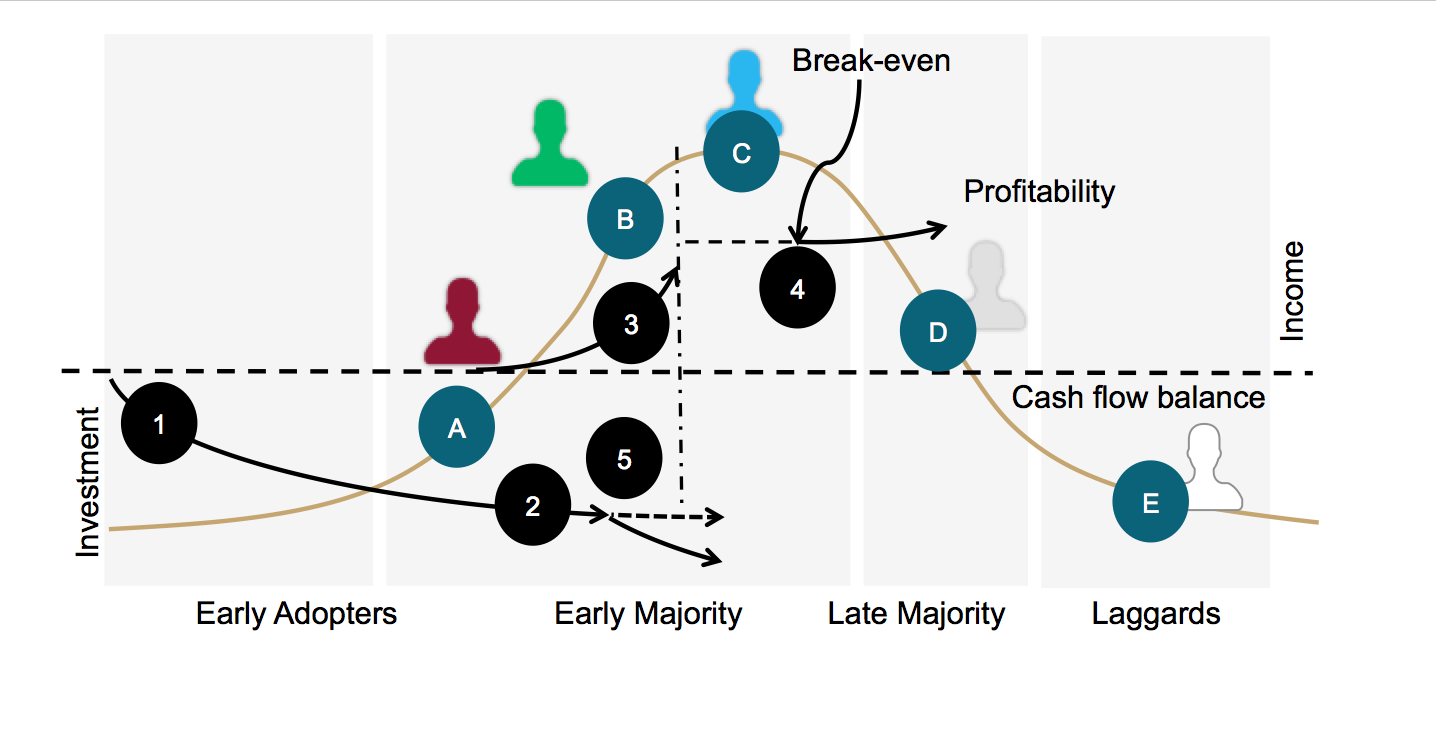Topic
Segmentation based customers and user profiling explained
Response
One of the distinct differences between traditional and agile organisations, which are highly customer centric is the way they view their customers and users. In particular, how they are profiled, categorised and the order in which they are served.
Agile organisations adopt a segmentation based approach to customer and user profiling. The change from cohort to segmentation based profiling ensures they become extremely customer focused and gain the ability to adopt a lean life cycle process.
Successful segmentation adoption requires organisations to fully appreciate the principles of segmentation profiling, which they use to create a segmentation feature matrix. The output of this initial research activity enables them to develop a segmentation release plan that takes account of both functional and financial factors, as well as exploiting a number of market characteristics, for example, first mover advantage.
Segmentation Perspective
For those of you have read the publication ‘Crossing the Chasm’, will be familiar with how start-ups categorise their customer base and how they adopt a staged (multiple iteration) and lean release process to address a number of important factors, including:
a financial capacity
gain first mover advantage
secure a specific customer base
develop a highly targeted marketing campaign
obtain quick customer and market feedback
Segmentation View
Organisations everywhere, large and small, old or new are adopting lean start-up techniques for their entire life cycle. As the first image demonstrates, one the core differences when compared to traditional life cycle strategies, is how the Agile organisations categorise their customer and user based on segmentation characteristics, a combination of psychographics and behavioural characteristics.
Segmentation profiling means, creating groups of customers or users that have the same high priority psychographic or behaviours. These translate into the groups of people or organisations that share the same needs and wants (in other words, features).
Using the development of a new smart-phone as an example, we'd like to demonstrate how taking a segmentation view influences the entire product life cycle, when compared to a traditional cohort based approach.
Cohort Types
Cohort Groups
As we are all know, smart-phones are constantly evolving pieces of technology offering its users a wide variety of features. Some features for example are more important to some than others. Enhanced camera resolution for example, or privacy and security. Other features such as integration and support with other devices, maybe high on certain users list of priorities, which we term Brand and Eco capability during this learning activity.
For the purpose of demonstrating the important of segmentation profiling, let's pretend you have just been appointed the new Innovation Officer for a leading PC laptop and tablet manufacturer, which currently has no smart-phone offering. Your strategic objective is to gain a 5% slice of the global smart-phone market within 5 years..
As briefly introduced, if users and customers seek different features, i.e. needs and wants, then it seems appropriate to group the customers and users by segment. Having studying the original feature matrix, we conclude, we can group our customers and users into the following five distinct segments:
Segmentation Groups
The Socialite is in constant communication with their family and close friends using their smart-phone. Sharing every specific detail of their life daily.
For the Vlogger the smart-phone is their periscope into the world of digital images and short videos. Constantly browsing the various picture sites, e.g. Instagram or YouTube, either liking other peoples' content or creating and sharing their own.
For the Travellers, whether they're a dreamer or doer, the individuals have the travel bug. And the smart-phone is a digital photo album. Whether its a quick weekend away to a capital city or a more extreme 'around the world trip on a gap year.' the Travellers is fastidiously capturing and possibly sharing every moment.
For the Business Users the smart-phone is a tool they are constantly relying on to confirm when and where their next meeting is, quickly check their email or rapidly exchange instant messages with colleagues as they hop out of a taxi or between meetings.
The Brand and Eco Warrior puts their trust in market leading products, which offer a sense of security and user experience across all their digital exploits.
With five segments identified, entering an already saturated smart-phone market that is already denominated by 2 or 3 global players. Apple, Samsung and Huawei is a difficult challenge.
The first challenge for our a newly appointed Innovation Officer and their recently formed Agile team would be to identifying its unique selling point and develop an associated marketing and release strategy. In other words, what features are going to be so compelling that existing smart-phone users will switch devices. With only a 5 year window, you will have to choose wisely.
Segmentation Feature Matrix
Having identified 5 potential segments, we embark on an extensive research program, which aims to formulate the following Feature Matrix. Against each potential Segment (across the top) we weight the importance of each features (on the left hand side), high, medium or low.
Segmentation based Feature matrix
Segmentation Life Cycle
The next step in the segmentation and feature analysis process is to attempt to group the responses to form 3 or 4 individual releases that take their lead from the competitive analysis work that suggests existing competitive offerings still offer poor camera capability or for example, a new high resolution imaging sensor development by another company within the corporation is believed to offer the company a unique or distinct selling point.
Release one would be developed specifically for the Traveller. In doing so, its core features would become:
taking high quality photos,
using the phone to make and reconfirm their travel arrangements, e.g. with hotels and training booking offices, knowing exactly where they are
passing the time on those long haul flights and long train journeys listening to music.
Segmentation based Feature matrix - Prioritisation
Cohort based Feature Matrix - Prioritisation
Should the company manage to gain market traction (foot hold) with its first release, it would consider building on those core Features to create a Release 2, which would focus on introducing Video Editing capabilities and marketing it directly at its second segment of Socialites and Vloggers with minimum additional investment. It is important to recognise at this points that and agile approach would enable the Innovation Officer to release a product to market earlier due to the focused scope. And should the success of the first release, where its believe barriers to entry are lower than other segments, fall short of expectations the organisation has the opportunity to limits its financial exposure by cancelling the initiative.
Release 3. As the figure indicates would focus on the Business Community with its key features including, enhanced data and communication privacy, security, GPS tracking for both location and lost and found capabilities.
Finally, with a steady growing customer base, Release 4. would focus on delivering additional features for the Business and Traveller customer and user base. For example, providing support for integrated ePayment capabilities, e.g. across the App story video streaming services and by eWallet. And as they constantly move between smart-phone, desktop and cloud services, the Brand Eco warrior will be expecting a consistent experience. Tighter integration to other hardware and digital services currently on offer could be introduced.
Segmentation based Life Cycle
Cohort based Life Cycle
Segmentation Release Characteristics
Under the marketing campaign slogan THE PERFECT TRAVEL COMPANION our multi-release segment based strategy lifts off.
What was original consisted to be a single mass market release of a new "smart-phone to ALL users" point A, has been reshaped to enable earlier release specifically aimed at attracting the early adopters at point B.
As the release 1 Traveller user base increases at multiple points along the life cycle as indicated by the C points (between B and A) the organisation and team would consider the second release.
Segmentation based Financial Model
Full commitment to the second release doesn't occur until:
revenue has been secured from the first segment. (If you don’t succeed in the segment where you have a significantly stronger offering, what makes you think you can succeed as your strength weakens as you move left to right as you enter a section of the market dominated by incumbents).
the organisation has developed a continuous learning cycle with feedback from the first release shaping the 2nd and 3rd releases (on features, marketing strategy and after sales effort).
the organisation has created a highly tailored (targeted) marketing strategy per segment.
As well as dramatically reducing the commercial risk of new offerings, the organisation's adoption of a continuous performance review cycle between each release, ensures they're constantly taking into account both internal and external factors influencing their success and always working on the features for a particular segment that represents the highest value.
Finally, as briefly mentioned earlier, a segment based approach enables the organisation to cancel a future release (e.g. Release 4 to Support segment), if the business case evaluation reveals diminishing returns or greater benefits can be gained by diverting the investment elsewhere.
Cohort based Financial Model
Financial Characteristics
What about the financial aspects of a segment based multi release strategy? When evaluating the financial status of a product there is always two perspectives to consider. The two perspectives are:
Investment and cashflow
Income and profitability
The investment and cashflow perspectives are of great interest to small and medium sized organisations. Without cash flowing into the business they lack the ability to continue research, development and the release of enhancements or new offerings. This financial pressure is typically exacerbate with a traditional cohort strategy because it requires more investment to meet the needs of multiple customer and user types, lengthens development and importantly requires multiple go to market strategies, each focusing on a particular cohort to gain awareness.
As the investment and cashflow figure shows, whilst developing for the Traveller segment (point 1), which continues to point 2 as sales and marketing activities commence, following the initial release at point A the organisation wont starting returning to a positive cashflow position until later, point 3. Break even and any future profit is also to follow as indicated by point 4.
Investment and cashflow
At some point during the Early Majority phase, on or around the point 2, the organisation will need to decide whether to increase its investment (point 5), further stretching its cashflow or not. In other words, does it start developing the enhanced Video Editing features for the second segment made up of Vloggers and Socialities prior to securing a health revenue stream from the Travellers?
This decision is something every Agile organisation must face, which requires clear, concise and update information on the ongoing performance of the initial release/s and a robust businesses cases that reflects the very latest customer, market and competitive analysis data. Fortunately, the activities required to help make these decisions are part of a successful Agile organisation way of working.
Discover more
Additional information, including additional information on the traditional cohort approach to customer and user profiling and analysis, are available in the Monetical knowledge base.
Contact us at info@monetical.com for further information and access.












